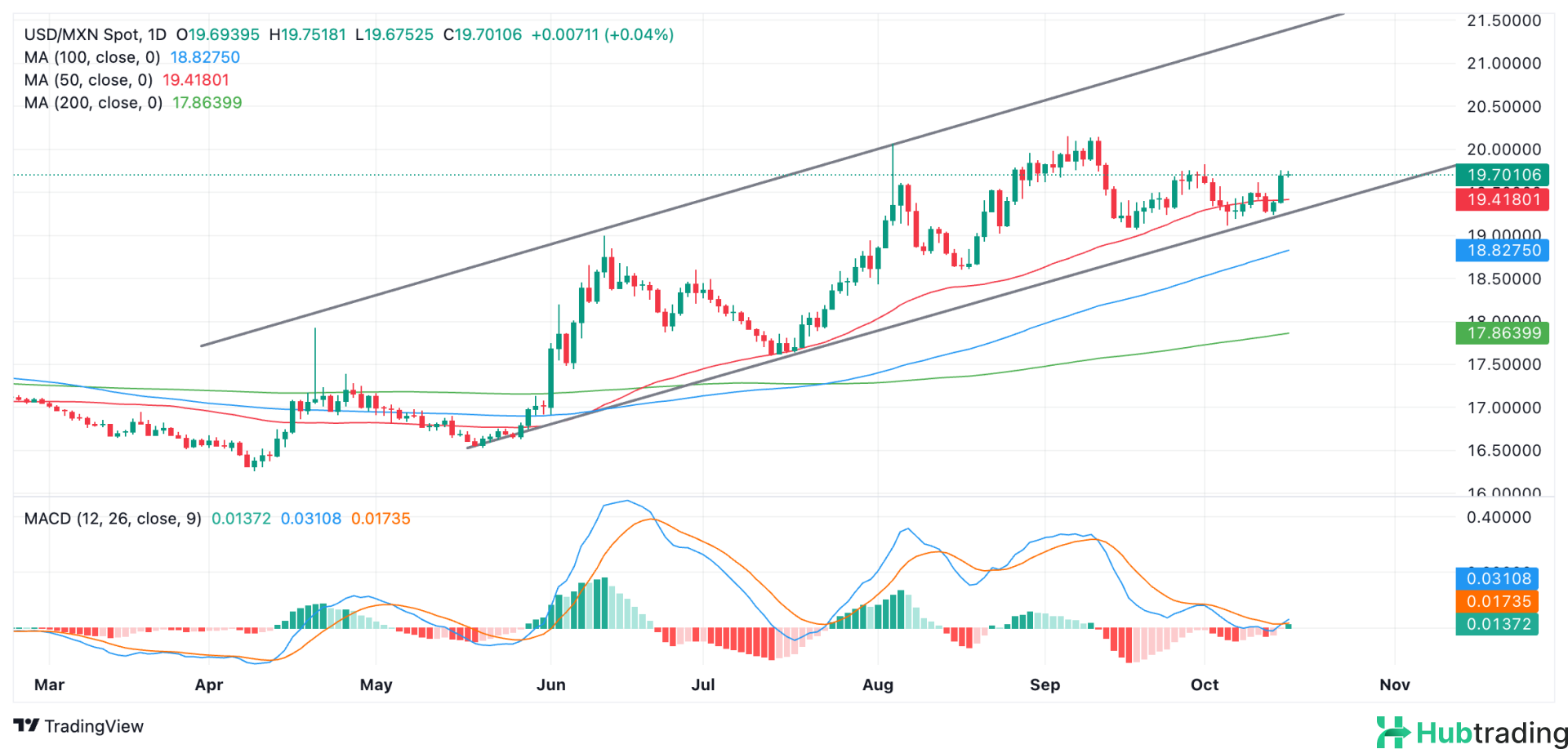- The Mexican Peso drops sharply after Donald Trump announces plans to block Mexican-made cars from entering the US.
- A key report from the IMF regarding Mexico’s economic outlook adds to the pressure.
- USD/MXN experiences a strong rally from its support level at the base of a rising channel.
The Mexican Peso (MXN) continued its decline on Wednesday, following a 1.5% drop in its most heavily traded pairs the previous day.
The Peso's sell-off was triggered by former US President Donald Trump's announcement of potential tariffs of “100%, 200%, or even 300%” on Mexican cars entering the US. This move aims to protect the struggling US auto industry from foreign competition. Additionally, a critical report from the International Monetary Fund (IMF) on Mexico’s economy contributed to the Peso’s steep decline.
Peso Depreciation Following Trump’s Comments
On Tuesday, the Peso depreciated over 1.60% against the US Dollar (USD) after Trump threatened to impose prohibitive tariffs on Mexican-made vehicles.
“Mexico is a tremendous challenge for us,” Trump stated in an interview with Bloomberg News Editor-in-Chief John Micklethwait. He expressed concern over Chinese auto plants in Mexico that could sell cars in the US market, warning, “They will have all the advantages and none of the disadvantages. And that will be the end of Michigan, the end of South Carolina.”
Trump’s remarks carry additional weight as bookmakers now see him as more likely to win the presidential election than Vice President Kamala Harris. According to OddsChecker, Trump has a nearly 58% chance of winning compared to Harris’s 42%. However, recent opinion polls still show Harris leading with 48.5% of the vote, while Trump trails at 46.1%, according to FiveThirtyEight.
IMF Report Adds Pressure on Peso
The Peso was further pressured by an IMF report highlighting a slowdown in Mexico’s economic activity and growth. The report stated, “Activity is decelerating. Despite an expansionary fiscal stance, growth is slowing to around 1.5% this year, partly due to binding capacity constraints and a tight monetary policy.”
The IMF also noted that downside risks to growth include weaker-than-expected US growth, increased global risk aversion, and potential impacts from recent institutional reforms. However, the IMF acknowledged Mexico’s nearshoring advantages due to its proximity to the US and existing free-trade agreements.
Regarding Mexico’s controversial judicial reforms, which aim to elect judges by popular vote instead of appointments, the IMF cautioned that these changes could introduce uncertainties around contract enforcement and the rule of law, potentially affecting private investment decisions. Despite these concerns, the IMF remains optimistic about the reforms.
Technical Analysis: USD/MXN Spikes from Rising Channel Support
USD/MXN has rallied from a solid support zone at the base of a rising channel, coinciding with the 50-day Simple Moving Average (SMA) at 19.42.
The pair appears to be in a short-term uptrend, supported by the technical principle that “the trend is your friend,” suggesting a continuation higher.
The next target for USD/MXN is 19.83 (the October 1 high), and a break above this level could lead to further gains toward 20.10 and the September 10 high.
The Moving Average Convergence Divergence (MACD) line has also crossed above its signal line, reinforcing the bullish outlook.
USD/MXN Daily Chart






